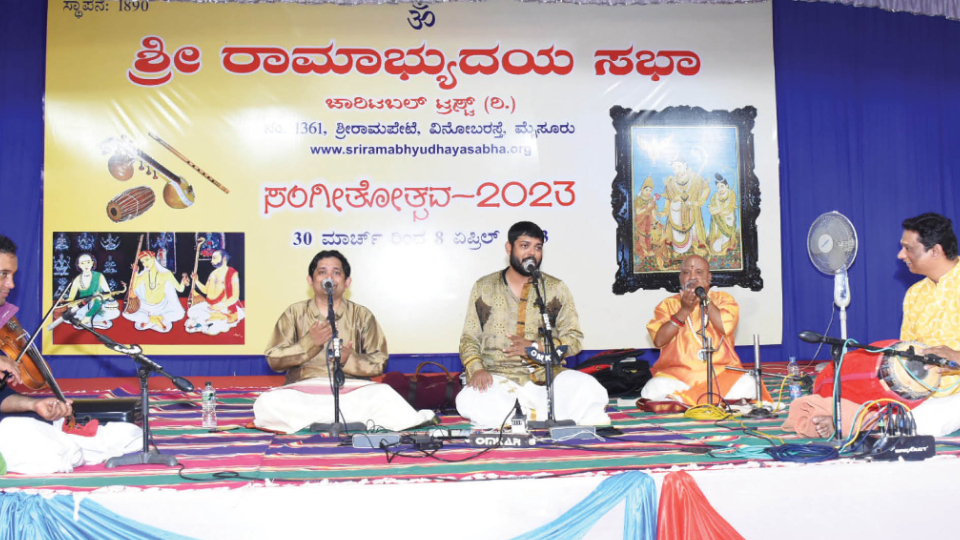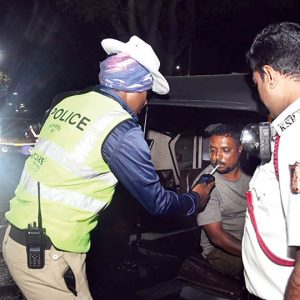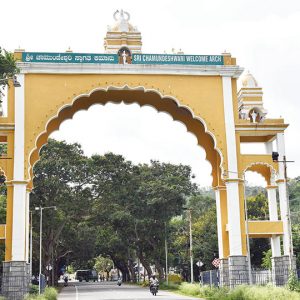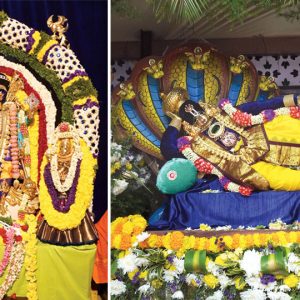By Dr. Padmavathi Narasimhan
On the ninth day of Ramothsava celebrations of Ramabhyudaya Sabha on Apr. 7, Vid. Prasanna Venkataraman and Vid. Ritwik Raja from Chennai presented a vocal duet. They were accompanied by Vid. H.N. Bhaskar on violin, Vid. Delhi Sairam on mridanga and Vid. B. Rajashekhar on morching.
Considering that the duo are not from the same school, this concert was a laudatory attempt and the music brimmed with emotional poignancy and lyrical allure, creating a hypnotic effect.
When two artistes are from two different schools, it is not easy to perform together as the pathantara and the bani or style differs from school to school. While Prasanna’s singing brought memories of DKJ again and again, Ritwik’s singing was mostly an imitation of his guru Krishna, so much so, that it showed even in his mannerisms. Perceiving this, this duo cleverly managed it choosing to sing the compositions singly and sharing the manodharma part together.
However, ‘Abhimanamennadu galgu Rama’ by Patnam Subramanya Iyer in Adi Tala by both the vocalists was a good attempt together and the kalpana swaras that followed showcased the essence of the raga by both the artistes. Ritwik then chose to sing Anandabhairavi ragalapana, in which the level of maturity of his music was evident even in the short form of the raga. The composition in this raga ‘Rama Nama Payasakke Krishna Nama Sakkare’ by Purandaradasaru was sung by Prasanna Venkataraman. It seems to be the Purvikalyani season. Six out of eight artistes here sang this raga on the same dais. Prasanna sang Purvikalyani alapana commendably. Methodically building and focusing at beautiful phrases. The composition ‘Gyanamu Sagarada’ by Tyagaraja was sung by Ritwik Raja, which found niraval and kalpanaswaras at the usual ‘Paramatmudu Jeevatmudu’ by both the vocalists.
‘Ramachandrena Samrakshitoham Seeta’ is a remarkable composition of Deekshitar in Manji. This presentation produced a pleasing evocation of the ‘ragabhava’ with lyrical fervour. ‘Sarasa Sama Dana Bheda’ (started with the anupallavi ‘Parama Shambhava’) was a welcome piece but in Ritwik’s singing, especially the niraval, it was clear that he is greatly influenced by Madhurai Mani Iyer’s version of the composition. The swaras by both the singers were very lively and vibrant.
Keeravani, the star of the evening, was sung with plenty of imagination and the RTP delineation was a proof of the artistes’ creativity. While Prasanna elaborated the ragalapana, Ritwik sang the tanam to mridanga, expanding it stage by stage. The duo kept the pallavi simple — in Aditala, single kale but the niraval and the kalpana swaras made it grand. Ritwik chose popular and familiar compositions in the same tala and same edupu in different ragas, thus making the pallavi rendition colourful and attractive, which also served the ragamalike purpose. The lyrics ‘Karuninchara lokaadhaara’ was presented like ‘Brovabarama’ in Bahudari, ‘Teliya leru Rama’ in Dhenuka, ‘Kanugontini Sri Ramuni’ in Bilahari and ‘Manaviyalakinchara’ in Nalinakanti, elaborating in niraval and kalpanaswaras, the technique of which was highly appreciative. Bhaskar’s reply to each of these was praise-worthy.
Delhi Sairam’s mridanga attracted the attention of the audience throughout and Rajashekhar’s morching received tremendous applause from the audience. The concluding pieces of the concert were ‘Sri Ramachandra krupalu bhaja man’, a Tulsidas bhajan by Ritwik and Purandaradasa’s Rama Mantrava Japiso’ by Prasanna Venkataraman.








Recent Comments